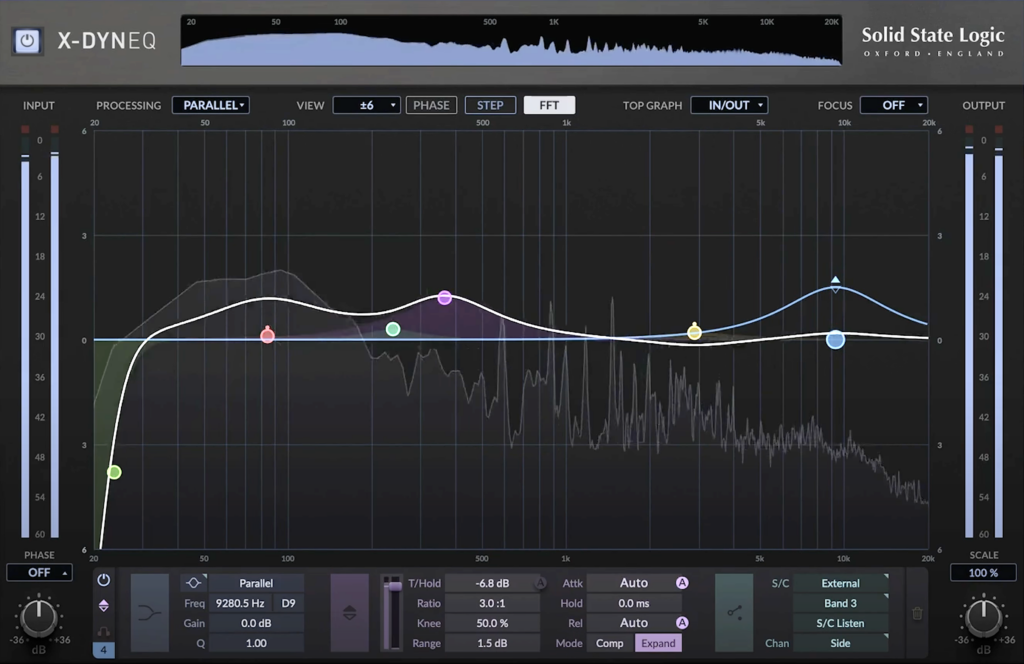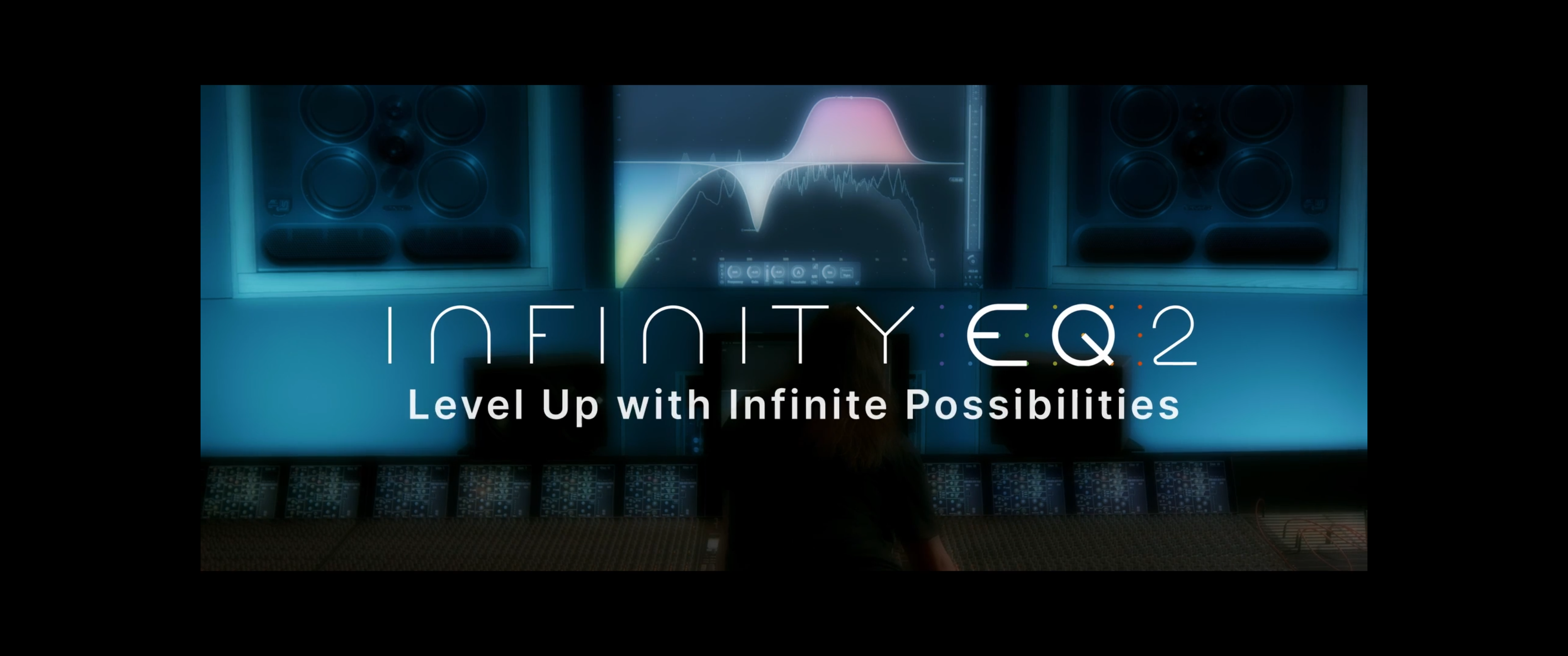To shape and polish a mix, equalization is arguably the most important accessory in your studio toolkit. You have the power to both sculpt the tone of individual tracks and also polish the overall sound of a mix by emphasizing desirable frequencies and removing problematic frequencies. Clarity, depth, and balance are the goals and EQ is the tool.
Naturally, for this part of the production process, you want the best tool possible. It needs to be technically precise, yet intuitive and enjoyable to use — while enhancing your mixes in a transparent but musically noticeable way. Enter Slate Digital’s Infinity EQ 2.
New in v2: Flexible Filters
Infinity EQ 2 builds on the strengths of its predecessor, Infinity EQ, Slate Digital’s 24-band parametric equalizer, prized for its sonic excellence and user-friendly workflow. Version 2 enters much-requested new territory by adding dynamic filters, three new filter types, and even greater ease of use.
The star among these enhancements is dynamic filters. Dynamic filters combine the best aspects of parametric EQ with multiband compression to cut, boost, and harmonically shape sound adaptively in real time, according to the frequency content and amplitude of the target audio or a sidechain signal.
Instead of just static Center Frequency, Gain, Q, and Filter Type parametric parameters that are applied to an entire track without variation, Infinity EQ 2’s dynamic filters add Threshold and Timing controls. So, when audio exceeds a chosen threshold in a specific frequency band, it triggers a boost or cut. Attack and release characteristics are set by choosing either a Tight or Smooth timing preference and scaling these with a Time control. In short, Infinity EQ 2’s dynamic filters respond to an audio source in a very intelligent, transparent, and easy to configure way.

Set Attack and release characteristics by choosing Smooth or Tight as a timing preference and scaling as necessary with the Time parameter.
Dynamic filters useful because they enable you to sculpt audio that varies in frequency content over time. Case in point: taming a vocal that peaks harshly only on certain words. Or, conversely, boosting key frequencies in a kick drum that gets masked only when a bass guitar hits certain notes.
Previously, these cases would have called for painstaking, tedious automation that often sounded unnatural. Infinity EQ 2 intelligently automates the intensity of these boosts and cuts for you, with frequency band curves moving smoothly from an Offset Gain to a Target Gain when the signal exceeds your threshold. Attenuating harsh, boomy, or resonant frequencies that jump out intermittently during a performance has never been easier.
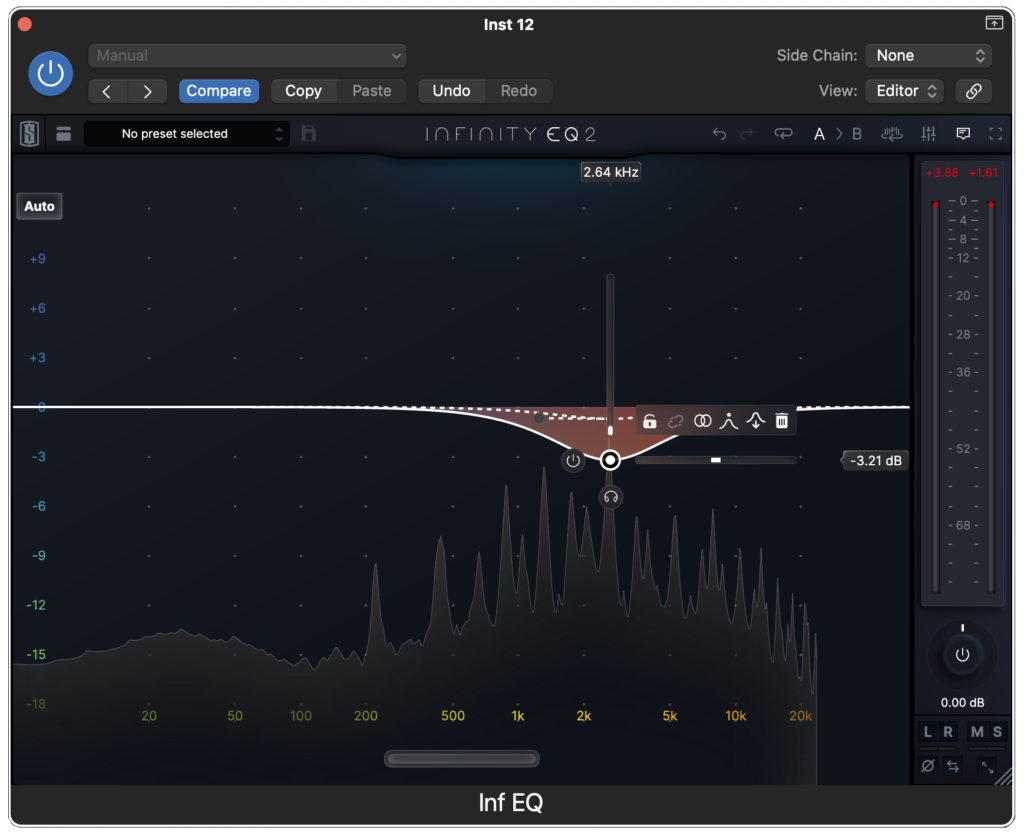
Infinity EQ 2’s dynamic filters allow precise control over offset gain and target gain.
And with three new filter types — Bandpass, Notch, and Tilt — Infinity EQ 2 covers even more use cases than before, with each new filter designed to handle everything from surgical frequency shaping and correction to broad tonal balancing.
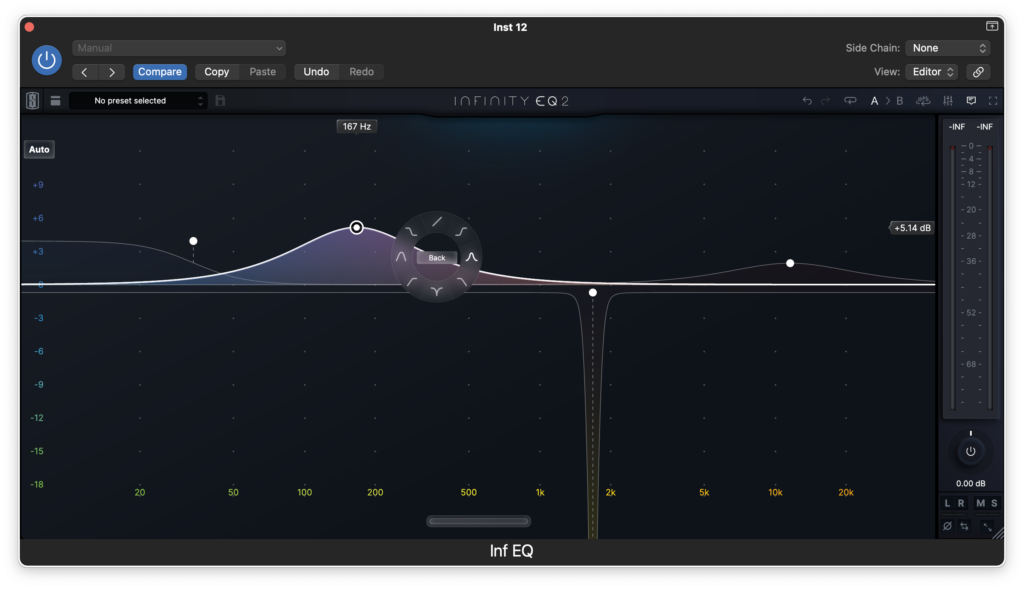
Infinity EQ 2’s dynamic filters allow precise control over offset gain and target gain.
As with all of Infinity EQ 2’s filters, they are designed with continuously adjustable slopes instead of a fixed set of values for flexibility — a limitation of other EQs such as FabFilter Pro Q.
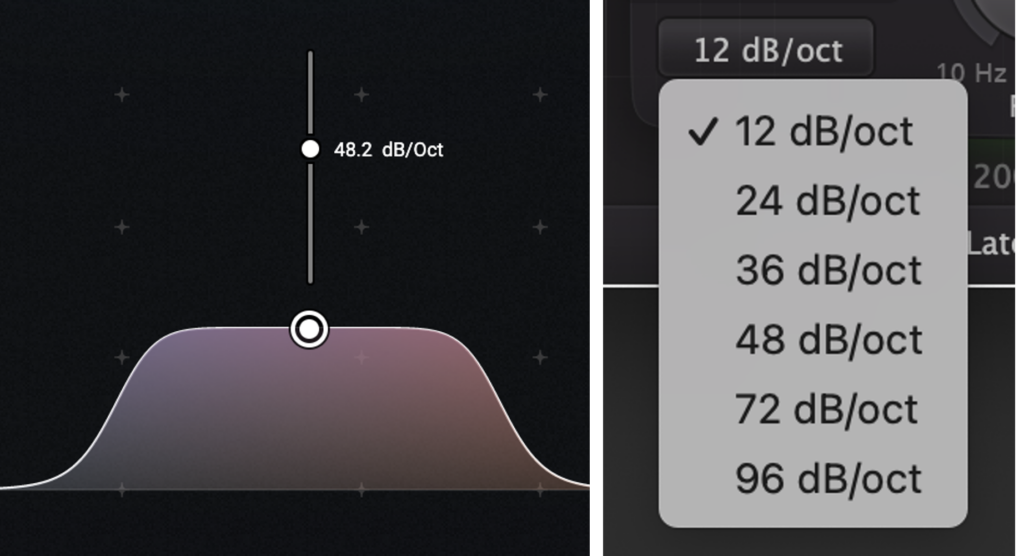
Infinity EQ 2 provides continuously adjustable slopes (left) instead of a fixed set of values (right) for precision and flexibility.
Other Ways Infinity EQ 2 Stands Out from the Pack
While Infinity EQ 2 isn’t the only Dynamic EQ in the plug-in tool space, what gives it the edge over other contenders such as FabFilter Pro Q and Kirchhoff-EQ is the excellence and accuracy of its zero-latency, analog-matched filters.
These outperform other EQs for predictability at Nyquist frequency, stability, and symmetrical evolution across the frequency spectrum. All of this translates into some of the most natural, non-digital sounding lows, mids, and highs you can achieve in the box.
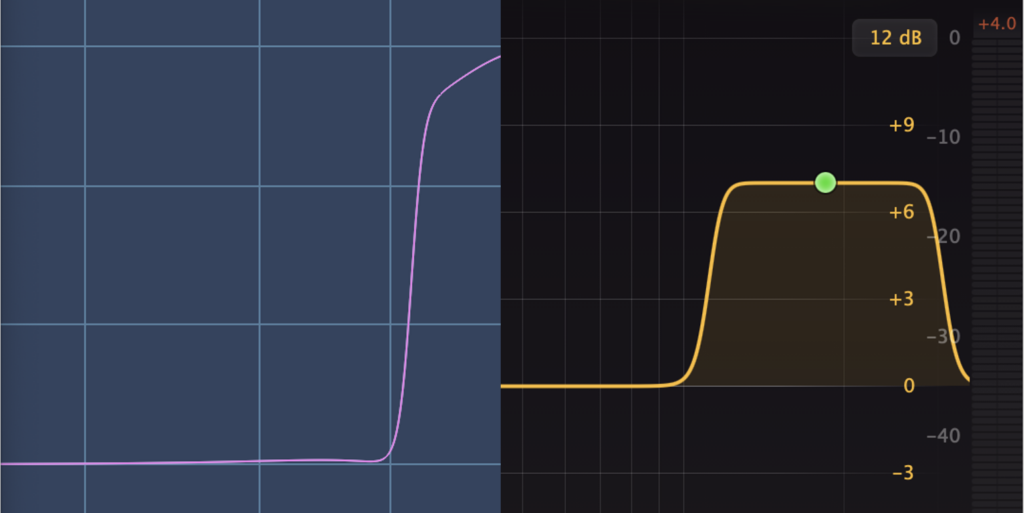
Unlike some EQs (left), Infiinity EQ 2’s filter curves (right) are smooth and predictable at Nyquist frequency
Another key advantage of Infinity EQ 2 is that it allows you to sculpt the behavior of its filter curves in significant ways that aren’t typically provided in other EQs. Specifically, you can change the overall shape of parametric boosts or cuts from a conventional bell shape to a flat-topped Butterworth style curve — allowing you to move freely from musical to surgical as the situation requires.
And while other drag-style EQs typically limit you to fixed stereo, mid, side, left, or right channel operations, Infinity EQ 2 provides varying degrees of control. You can push a boost hard left or hard right, for example, but you also have the power to move between the two extremes, essentially panning the frequency boost.
With its precise controls, fluid interface, and peerless sound, Infinity EQ 2 lives up to is name, providing limitless possibilities for sculpting mixes that are clear, present, and compelling.
Infinity EQ 2 is available in several formats including VST2, VST3, AAX, and AU as part of Slate Digital’s All Access Pass subscription or perpetual license though the Slate Digital website.
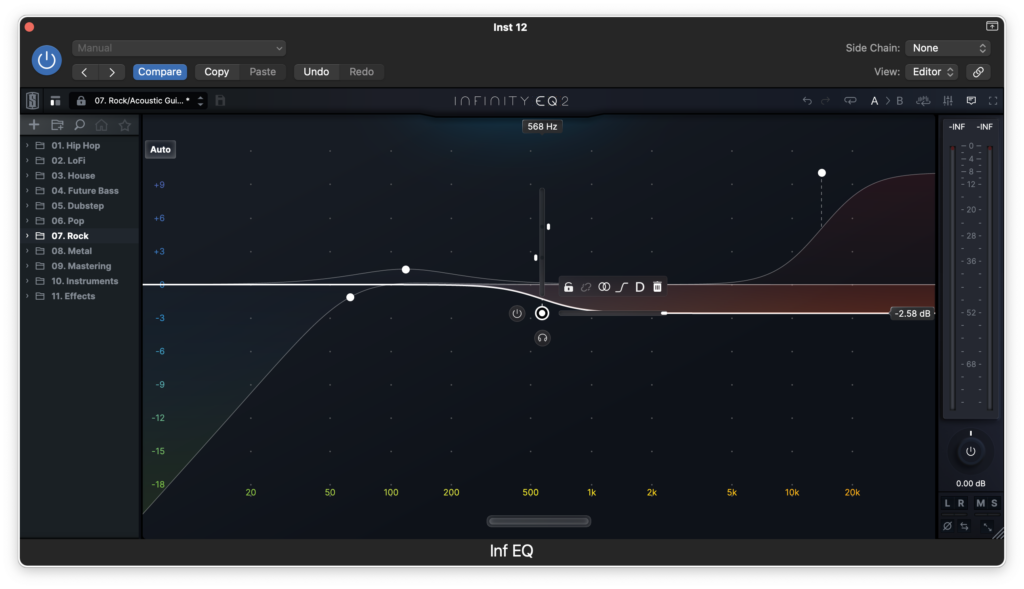
Infinity EQ 2 showcases an immersive interface that lets you focus on your ears rather than technical minutiae.
Key Features
- 24-band dynamic EQ with auto or user-configurable threshold
- Zero-latency, analog-matched filters with continuous filter slopes
- 3 new filter types: Notch, Bandpass, and Tilt
- Per-band stereo, mid/side, left/right processing with filter panning
- Multiple band grouping
- Tight or Smooth response options with scalable timing
- Per-band dynamic sidechaining
- Intuitive, immersive workspace
- Backward compatibility with Infinity EQ
SIDEBAR: X-DynEQ from Solid State Logic
It’s worth noting that X-DynEQ 2 from Slate Digital’s partner company Solid State Logic offers an equally powerful, complementary approach to Dynamic EQ. Both tools offer superlative sonics, up to 24 bands of extremely flexible EQ, precise control over their many filter curves, mid-side processing, independent left/right processing, and much more. But there are notable differences, primarily in the user experience and workflow.
Infinity EQ 2 puts its emphasis solidly on the user experience with an immersive workspace that prioritizes listening over by-the-numbers adjustments. Optimized for mouse control and touchscreen surfaces, it prioritizes economy of motion and efficient workflow while minimizing visual distractions.
X-DynEQ 2, on the other hand, provides a more technical approach to the equalization process. Critical data such as filter type, frequency, gain, Q, as well as ratio, knee, attack, release, and more are prominently displayed as you make adjustments. A piano roll view also allows the matching of EQ frequencies to musical tones. As an added sonic bonus, X-DynEQ 2’s anti-cramping EQ technology and optional HQ mode provide high-accuracy EQ response with dynamic oversampling that preserve high-frequency information sometimes lost in a digital-audio environment.
Many studios use both products to cover all of their EQ needs for precision, stellar sound, and preferred work style.
